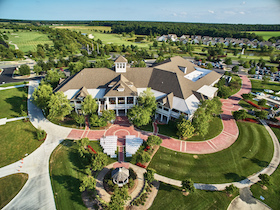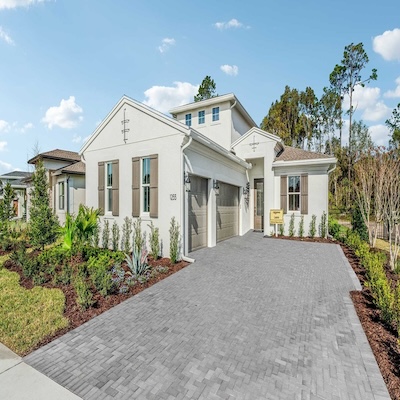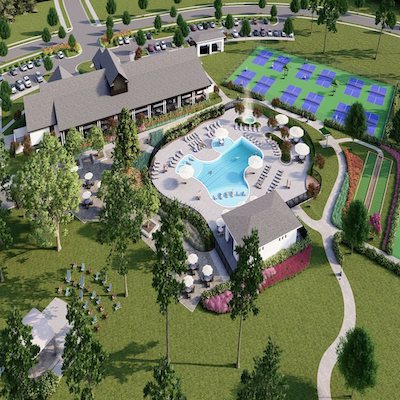Bad Economy Means Active “Younger” Adult Communities
Category: Active adult communities
The press has been filled with reports of financial troubles in the retirement housing and real estate markets.
Faced with unsold units, vacant lots and empty condos, the reaction of some active adult communities has been to try to expand their base. The obvious way to do that is to let in younger buyers. Many active adult communities are age-restricted to at least one resident who is at least 55 years of age. Typically, unless the community has at least 80% of its population 55+, they do not meet federal regulations that allow developments to exclude children. At the many other active adult communities that have no official age restrictions, the fact is that most of their residents are 55 or better.
On the one hand letting in younger buyers might be able to fill more units, but it could have ramifications on the other side. Existing residents, for example, often chose to live with people their own age; away from noisy children and rushing commuters. Neighboring towns that lobbied to attract these active adult communities feel betrayed, since the communities were let in with the expectation that their older residents would pay taxes, but not demand expensive services like schools.
One of the communities profiled in a recent Wall Street Journal article was Sun City Grand in Surprise, AZ. This Sun City lowered its minimum age to 45 from 55, although children under 19 are still not permitted as permanent residents. The plan seems to work, as some younger people are attracted to these communities for their recreational opportunities. Many residents are pleased as well with the additional financial support younger people bring to the community, citing excess capacity when aging residents gradually stop using communal facilities. Leisure World in Mesa, AZ is another community that has lowered its age requirements; many others are considering the change. Century Village in Deerfield Beach, FL, one of the nation’s oldest and biggest active adult communities (it has 254 condominium buildings), has people talking about making the change. Two of the biggest reasons to change are falling prices and unsold units – proponents of the change think that sales to younger buyers could prop up a devastated market, while detractors say the change would be unfair to existing residents who bought with the understanding they would be living with people their own age.
Meanwhile in housing for older seniors
Continuing Care Retirement Communities (CCRCs), asssisted living, and retirement homes have been hit hard because older seniors haven’t been able to sell their homes. That sale is usually necessary to allow seniors to come up with the equity necessary to buy into these facilities or make the hefty monthly fee payments. Entry fees to CCRCs can easily go over $300,000, depending on the unit and luxury of the community. Monthly fees can go over $10,000, although typically they are about $3000-5000. Two of the biggest operators were profiled in the New York Times last week (“Debt Struggles and Elderly Living”)
Two of the biggest names in senior housing appear to be having some serious financial difficulties. The Times reported that Sunrise Senior Living is “trying to stave off bankruptcy”. Brookdale Senior Living “is considered likely to resolve its short-term difficulties, but it faces a mountain of debt…”. Brookdale manages 51,847 assisted living and retirement units, while Sunrise has 50,235. The stocks of both firms have been pummelled, dropping from the $32 share price area to in Sunrise’s case, less than a $1 per share. The odd thing about the company’s troubles is that occupancy rates aren’t that bad – about 90%. While Sunrise apparently had some other poor investment decisions affecting its financial state, Brookdale’s troubles indicate the tight margin that these companies operate on. Fortunately, there have been no reports of the companies cutting services to try to “save” their way out of trouble, and seem to be enjoying the continuing support of many of their customers.
But for all of the negative reports on senior housing, others are more bullish. Saying that moves to nursing homes and assisted living facilities are usually not optional, the demand will be there. There has also been very little building in the past 5 years. Investors Business Daily has an interesting article on the business prospects of senior housing.






Comments on "Bad Economy Means Active “Younger” Adult Communities"
55 plus communities says:
The reports of financial troubles in the retirement housing and real estate markets have really made so many old age people worried! I agree that the younger byuers should put their right foot forward to expand the base.